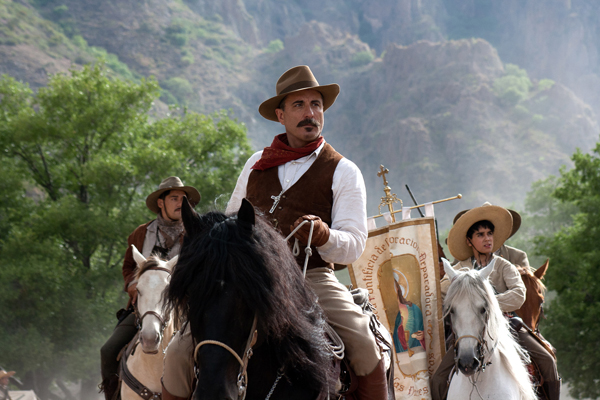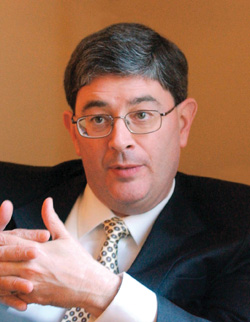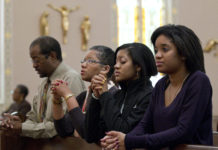
Most Americans haven’t the foggiest idea that a quasi-Stalinist, violently anti-Catholic regime once existed on our southern border. Those who don’t know how bad Mexico was in the late 1920s are about to learn, though: at least those who see “For Greater Glory,” a recently-released movie about the Cristero War, a passionate (and bloody) defense of Catholicism that’s remembered today, if at all, because of Graham Greene’s novel, “The Power and the Glory.”
There’s been a strange silence about all this for almost a century. Even Catholics aware of the extent of 20th century martyrdom seem to have little sense of the modern Mexican martyrs — although the addition of the memorial of St. Christopher Magallanes and Companions to the universal liturgical calendar (May 21) ought to remind North American Catholics just what was going on south of the Rio Grande during the years when the brutal government of Plutarco Elias Calles tried to destroy the Catholic Church in Mexico. It was a terrible time, and the example of the Cristeros, who included both underground priests like Blessed Miguel Pro, S.J. (perhaps the first martyr in two millennia to be photographed at the moment of his death) and fighters like General Enrique Gorostieta (well-played by Academy Award nominee Andy Garcia in the new film) ought to inspire 21st-century Catholics to stand firm in defense of religious freedom.
“For Greater Glory” takes some artistic liberties with history; the martyrdom of Christopher Magallanes, for example, happened in somewhat different circumstances than those described in the film. But taken as a whole, the movie conveys both the hard truth about the Calles regime and the often noble, but sometimes conflicted, story of Calles’s Cristeros opponents. The most moving subplot in the movie involves Jose Luis Sanchez de Rio, a teenager converted to serious Catholicism by Christopher Magallanes (as the film tells it) and “adopted,” in spirit, by General Gorostieta when the lad asks to join the Cristeros. Whatever the artistic license taken with the details of these relationships, it will be a hard heart indeed that is not moved by the depiction of the boy’s martyrdom, as he defies torture and blandishments, all intended to get him to apostasize, and cries “Viva Cristo Rey!” just before the bullets strike him down. Jose Luis Sanchez del Rio was beatified on Nov. 20, 2005; his liturgical commemoration (Feb. 10, the day of his death) should shape the rhythm of liturgical life in U.S. parishes, like those of St. Christopher Magallanes and Bl. Miguel Pro (Nov. 23).
In his Chrism Mass homily in April, Cardinal Donald Wuerl of Washington urged his priests and seminarians to see “For Greater Glory.” Cardinal Wuerl is not given to dramatic gestures; his suggestion that the film might help form the self-understanding of Washington’s priests and future priests was all the more powerful for that. Barack Obama is not Plutarco Elias Calles, and the United States in 2012 is not Mexico in 1926-29. But anyone who doubts that there are grave threats to religious freedom in North America today has only to consider the HHS “contraceptive mandate,” the administration’s refusal to defend the Defense of Marriage Act, the administration’s efforts to void the “ministerial exemption” in U.S. employment law, and the bad habit of Canadian human rights “tribunals” to levy serious financial penalties against Christian ministers who preach biblical truth.
Threats to religious freedom come in many forms — some hard, like during the Cristero War; some softer, if no less lethal to the first freedom. One way to blunt the hard threats is to stand firmly against the softer threats and to name those threats for what they are. “For Greater Glory” will inspire and encourage those already committed to defending religious freedom today. It is even more important, though, that those who haven’t yet seen the threat, or who deny that it exists, ponder this powerful depiction of the nearby and not-so-distant past, for the sake of the present and future.




![[VIDEO] Make Sunday feel like Sunday again](https://www.catholicsun.org/wp-content/uploads/2021/04/2021-YOUTUBE-BISHOP-MESSAGE-THUMBNAIL-ENGLISH-218x150.png)
